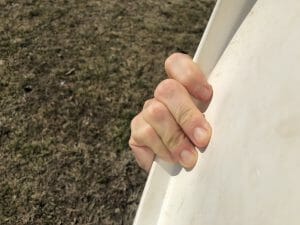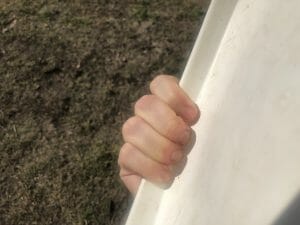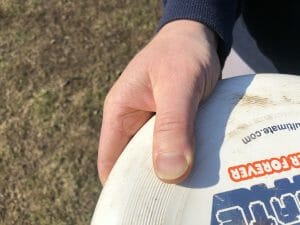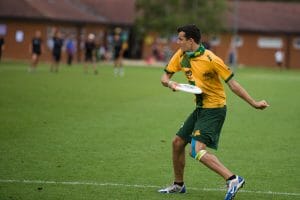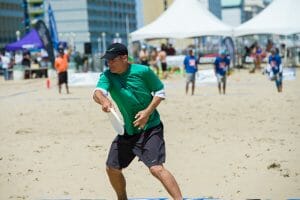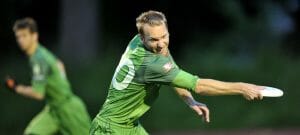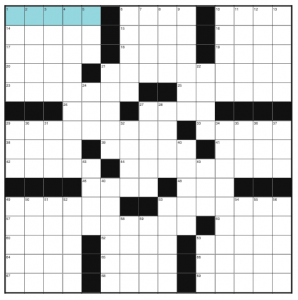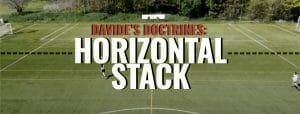
One of the best elements of ultimate frisbee is that it requires every player to be versatile. You can’t just be a receiver; you have to be a thrower as well. If you’re an offensive player, you have to play defense if you turn it over.
As a result, learning the basics of throwing is one of the first tasks on every new player’s to-do list — and even 20-year veterans still strive to improve their throwing.
Let’s talk about how to throw a backhand, one of ultimate frisbee’s foundational throws. Even brand new players need to be able to complete a short backhand throw.
The good news is that many players have some familiarity with a backhand, as it is the first throw most anyone learns when they pick up a disc, even if they are just casually tossing with a friend. It is also generally considered an easier throw to learn compared to the forehand, ultimate’s other fundamental throw.
Let’s break down the elements of a good backhand throw so you can start to master this crucial skill!
Every ultimate throw starts with a good grip. Holding the disc correctly ensures that you are transferring the energy of your body, arm, and wrist into an accurate and powerful throw.
The most-used backhand grip is called the FAN GRIP. The fan grip has the pad of the index finger on the underside of the disc, typically with the crease of the first knuckle on the edge of the rim, and the other three fingers “fanned” out in a comfortable way on the bottom of the disc. This provides additional stability in the throw and increases accuracy.
Another common grip is called the POWER GRIP, where all four fingers are tucked tightly against the underside of the rim of the disc. This grip maximizes the power of a throw and is typically used on pulls and long-distance hucks. It is generally a less accurate throw but the trade-off is that you can throw further with this grip.
|
|
|
|---|
For both grips, your thumb should be on the flight rings on the top of the disc, typically pointing forward at an angle. The specific placement and angle will depend on comfort based on the size of your hand and simply what feels good to you.
TIP: Typically, you need a firmer grip for more powerful throws.
Regardless of what grip you are using, it is crucial that you not put your index finger along the outside of the rim of the disc; while this is a common beginner’s mistake, it reduces power and will hinder your development as a thrower.
|
|
|
|---|
Mostly, you just want to find a grip that is comfortable and allows you to focus on other elements of the throw, like the rotation and angle of release, which we’ll cover below.
Maybe you’ve seen this: a couple friends are throwing a frisbee at a backyard BBQ. As they go to throw a backhand, they keep their shoulders square to their throwing partner, tuck the disc underneath their armpit, and sort of flip the disc forward with their wrist. This is such a common sight that it has a name: the barbecue backhand.
As you might guess, you don’t want to do this. As in any throwing sport, proper technique requires the full coordination of the body: have you ever tried to throw a baseball with just your wrist? No! You step or hop into the throw, create rotation from the hips and trunk, and transfer that energy up the kinetic chain through your arm and to your wrist.
Of course, throwing a disc on a backhand is a different motion, but the same principles apply.
Valeria Cardenas backhand body rotation
Importantly, your hips should be turned perpendicular to the place you want to throw the disc. (Not all throws require a full perpendicular turn, but it is a good general rule). If you are right-handed, you will pivot on your left foot and step your right foot out to the left, turning your shoulders 90-180 degrees counterclockwise from the spot you want to throw to. Twisting from your core, you “coil” up while reaching back with the disc, then, in a smooth motion, rotate clockwise with your elbow driving forward before extending your forearm and snapping your wrist to release the disc, following through across your body.
The extent to which you need to do all of these elements depends on the power of the throw. A five-yard backhand does not require a big windup and followthrough the way that a 60-yard backhand huck does. Sometimes, you want to prioritize a quick release, where you may barely pivot and use more of an “arm throw,” as opposed to generating power with your lower body and trunk rotation.
Important note: especially on more powerful throws, you want to keep the disc moving in a straight line when you pull it forward — like starting a lawnmower, as opposed to carving an arc — and on a line that’s roughly parallel to the ground. Don’t bring the disc from high to low as you bring it forward — while the “air bounce” technique can be useful in certain situations for advanced throwers, it’s a poor habit to develop as a new player.
Valeria backhand release angle
What should you be doing with your off-hand and arm? Some players like to keep their off-hand on the disc as they reach back in the windup, but once you are beginning to rotate forward into the throw, the off-hand should not touch the disc. The off arm usually flares away from the body early in the windup to assist in the reach back, but it should tuck back into the body as you approach release to maximize rotational power. *1
The technique is different, even among some of the best throwers in the world. You can see that Valeria Cardenas keeps her left hand on the disc while she winds up, while Yina Cartagena winds up with just her right hand.
Valeria Cardenas and Yina Cartagena backhand comparison
Look at this picture-perfect release angle, lower body engagement, and off-arm tuck from Khalif El-Salaam on one of the iconic throws of the last few years, a full-field backhand bomb for a goal.

Notice that he is unable, due to the mark, to bring the disc forward and through close to his body, which is optimal for generating power. Still, delivering a powerful throw from this position requires excellent mechanics, which El-Salaam is showing here.
He is bracing well through his front foot, which allows him to translate power from his lower body into the throw. Look how much his upper body and chest have opened up — more power generation. The last thing is to do is extend the arm and snap the wrist.
El-Salaam is also showing off strong off-arm mechanics, with a tight tuck into the body. And, crucially, his pivot foot is planted!
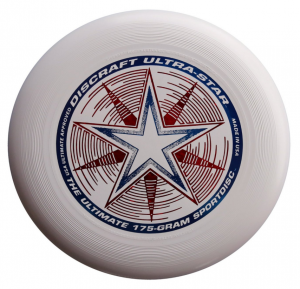
The Discraft Ultrastar and all other widely used ultimate discs (including the Eurodisc, Aria, and Yikun UltiPro) have similar flight characteristics. We will borrow some terms from disc golf, where disc flight is typically described with more detail and precision.
Ultimate discs have a great deal of glide, meaning that the disc is aerodynamic and wants to fly.
They have a high degree of turn, which describes the disc’s flight pattern at high speed (upon release). Thrown hard, ultimate discs will “turn over” (to the right for a right-handed backhand and to the left for a left-handed backhand) early in its flight. As a result, throwers must compensate for the power of their release by angling the disc to a more inside-out release, also known as a hyzer angle in disc golf, as opposed to throwing it flat out of the hand.
Ultimate discs have a limited amount of fade, which describes the disc’s flight at low speed (the end of its flight). Discs tend to “fade back” at the end of their flight, especially on longer throws where the disc’s rotation slows significantly. That means that right-handed backhands will fade back to the left (and left-handed backhands will finish to the right).
This means that you have to learn to calibrate your throws, depending on the power you are putting on the throw.
Additionally, you can shape the flight of the disc with your angle of release. On a lower-power throw thrown on an inside-out (hyzer) angle, you can get the disc to bend through the air. You can do the same with an outside-in (anhyzer) angle, arcing away from the body and then back towards the middle of the field.
|
|
|
|
|---|
It is worth noting that putting more spin on the disc — by getting a good snap at the point of release — will cause the disc to stay more true to its angle of release, both with less turn and less fade.
For beginners, though, it is most important to get comfortable simply throwing accurate, flat backhands at five yards, then 10 yards, then 20, then 30, and beyond. Adding angles can come later.
Windy conditions amplify the importance of proper release angles. Wind can change the effective speed of the disc through the air: throwing into a headwind creates more turn and lift, generally requiring a steeper inside-out release. Throwing with a tailwind tends to reduce lift and turn and typically requires higher release points and a flatter or even an outside-in release.
As opposed to most other throwing sports, ultimate requires maneuvering against an opponent trying to stop your throws. This means that you can rarely throw in the most mechanically advantageous way for powerful throws (close to the body). Often, you must have a wider release away from the body to get around a marker. Sometimes you may need to throw a high backhand or a low one.
|
|
|
|---|
Once you can consistently throw a simple, flat backhand at 10-15 yards, you can begin to work on different release points. Throw one from above your shoulder height. Throw from down by the ground. Step away and really extend the arm away from the body. Practicing different release points will help you gain mastery over the backhand.
ADVANCED TIP: High release backhands often have an even more exaggerated version of the fan grip, which allows you to have better control over the angle of the disc even as you’re reaching up above your shoulders/head.
Remaining balanced on your backhand throws is vital to mastering a consistent release. You should practice stepping out at various distances and directions and throwing clean, flat releases. Remember: you may need to throw past someone guarding you on the mark!
Can you step out wide and throw a clean release without feeling like you’re going to fall over? Can you pivot quickly, throw, and then quickly transition into a sprint? Balance work requires practice and repetitions.
To create separation from a mark, you want to get comfortable stepping out further into a lunge, rather than trying to reach your arm around them. Remember to bend your knee on your pivoting leg to maintain good weight distribution.
Also important is the ability to fake a backhand throw and still be balanced enough to return to neutral or pivot the other direction.
Balance is also important in other throwing motions, like during a give-and-go sequence, where you throw a pass and transition into a sprint. When looking to move quickly after a throw, you’ll need to keep weight on your pivot leg, so that you can push off of that leg into a run.
Many new players will quickly learn to throw short backhands but find that beyond a certain distance, they struggle. Either they simply cannot throw it as far as they want, or they are inconsistent with their accuracy (or both!).
Hucking the disc does require additional practice.
Some things to think about:
- Are you throwing with sufficient inside-out angle (hyzer)? Higher power throws will turn more upon release: you have to adjust the release angle of the disc to compensate.
- Are you generating power from your lower body and core? You need to coil your body, reach back with your arm, and, for maximum distance, turn your head away from the target. Then you need to work on bracing through your front foot, turning your shoulders, and driving the elbow forward through the throw (lawnmower pull).
- Are you overthrowing with your arm? Trying to really crank on the disc causes mechanical breakdowns. Focus on being smooth, not fast.
- Are you timing the step with the throw? It can help engage your lower body more efficiently. It’s hard to fully pivot and plant your foot and then try to wind up for your throw. It should be one consistent motion. Make sure you’re bracing on your front foot!
-

Photo: Scobel Wiggins — UltiPhotos.com Are you reaching back far enough? To max out your distance, you want to create more rotational power. If you take a snapshot at the “set point” where you have the disc back, it should be back as far as you can take it (for max distance). This means your throwing arm is basically straight.
- Are you rounding your throws? Make sure your arm is extended to straight in your windup, and then pull the disc forward in a straight line.
- Are you maintaining a neutral spine? Hunching over to try to add rotational power can lead to inconsistency. Work on the above techniques without compensating with a hunched-over position.
How to Throw a Backhand in Ultimate Frisbee
Throwing Form Project: A Video Archive Of Elite Throwers’ Mechanics
Should We Throw With Minimal Movement?
We Are Teaching it Wrong: Throwing Without the Body
Tuesday Tips: Throwing Without Effort
Tuesday Tips: Mastering The Art Of Touch
Tuesday Tips: Get Your Throws In Shape
Tuesday Tips: Triple Threat Throwing
Tuesday Tips: Pulling For Height And Distance
The Wiggins Zen Throwing Routine
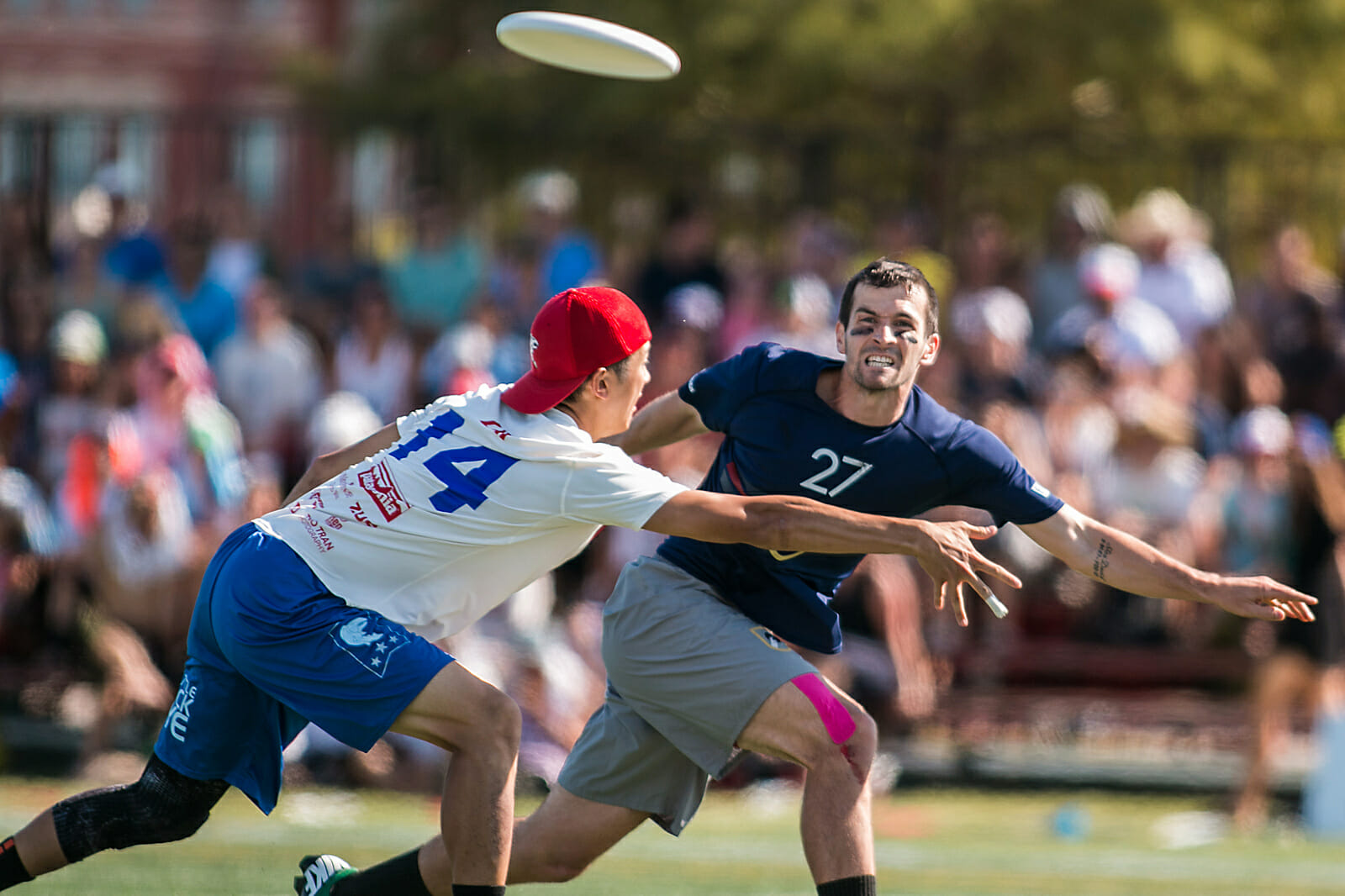
Ultiworld
More Features
The Ultiworld Crossword: +2
We’ve got some big crossword puzzle fans at Ultiworld.
The Ultimate Frisbee Glossary
As is the case with almost any hobby or community, ultimate is loaded with jargon and slang that can make it sound like it has…
The Illustrious Partnership of Megan Praz and Meghan Kemp-Gee
The duo behind the long-running Contested Strip comic talk ultimate culture, creative process, and their forthcoming graphic novel One More Year.
Davide’s Doctrines: Horizontal Stack
Breaking down the fundamentals of the horizontal stack formation.
